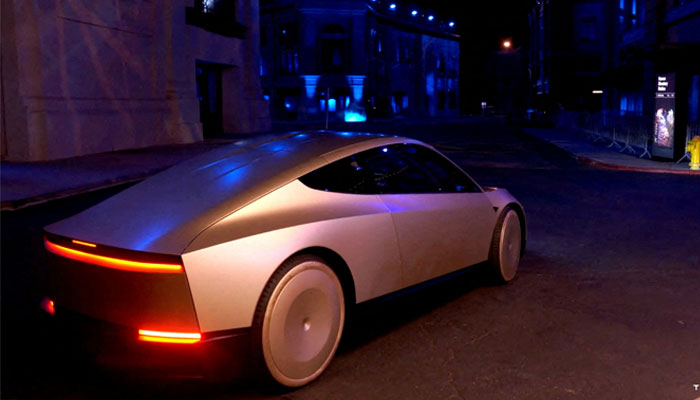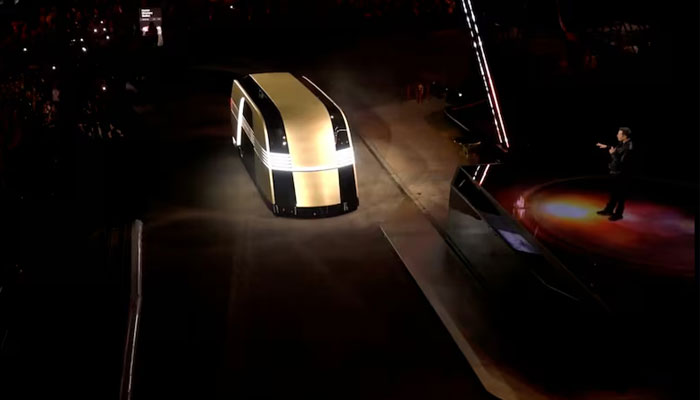
Tesla CEO Elon Musk showed off a two-door, gull-wing-shaped robotaxi with no steering wheel or pedals at a splashy event on Thursday, adding a robot car to the list as the company’s goal shifts from a low-priced, mass-market automaker to a robot maker.
Musk, 53, has reached the stage on a “Cybercab” that he said will go into production in 2026 and will be priced at less than $30,000. It will cost 20 cents per mile to operate over time, charging will be inductive, and requires no plugs, he said.
Musk, who is also the richest man in the world, said that cars depend on artificial intelligence and cameras.
He said the cars don’t need other devices like what robo-taxi competitors use — an approach that investors and analysts have pointed to as challenging from a technical and regulatory standpoint.
“The future of autonomy is here,” Musk said. “We have 50 fully self-driving cars here tonight. You’ll see the Model Ys and the Cybercab. They’re all driverless.”
The tech mogul also showed off a larger self-driving vehicle – called Robovan – capable of carrying up to 20 people, and showed off Tesla’s Optimus humanoid robot.
Musk’s plan is to operate a fleet of self-driving Tesla taxis that passengers can access through the app. Tesla owners will also be able to make money from the app by listing their cars as robo-taxis.

The event, which will take place on Thursday at the Warner Bros. studio near Los Angeles, California, is titled “We, Robot” — an apparent reference to the science fiction short story “I, Robot” by American writer Isaac Asimov, but also echoing Musk’s insistence that Tesla “It should be seen as an AI robotics company” rather than a car manufacturer.
This futuristic event was attended by investors, stock analysts and Tesla fans.
Investors expected concrete details about how quickly Tesla could ramp up production of robotaxis, secure regulatory approval and execute an aggressive business plan to leapfrog rivals like Alphabet’s Waymo, and they were disappointed.
“It all sounds great, but not so much in terms of time limits,” said Dennis Dick, a stock trader at Triple D Trading. “I’m a shareholder and I’m very disappointed. I think the market wanted more specific timelines.” “I don’t think he said much about anything… he didn’t give much information.”
Musk said he tends to be optimistic about time frames.
In 2019, the tech entrepreneur said he was “very confident” that the company would have a robotaxi by next year.
After broken promises, Musk shifted his focus this year to vehicle development after scrapping plans to build a smaller, cheaper car that was widely seen as necessary to counter slowing demand for electric vehicles.
